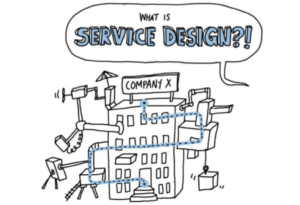Plain sight is almost always anything but plain.
“If you happen to be wearing red glasses then red flags do not appear RED!”, said a wise man, nearly a decade ago. (Trivia, find out who said it)
The point of invoking this is to say that ‘knowing’ the way things are, is not a naturally occurring phenomenon or even a process. Knowing is a deliberate act. Many a time we get separated from reality by our own biases, beliefs and past experiences. We unknowingly often miss and sometimes even misread the signals present right in front of our eyes. Neither youthful exuberance nor arrogant assertion helps us reset the view as well as failure does. The failure, which comes out of the ‘I know it all” attitude.
Enquiries guided at gaining knowledge about a subject, thing, concept, group of people or a set of circumstance can’t begin until the bearer accepts that those are things that he does not know well enough. Efforts invested in the discovery of knowledge enrich our understanding and from following our resolve, we gain strength. Whilst, many agree that these fundamental principles apply to most walks and disciplines of life, many take these to be especially applicable in the context of customer service. We intend to expand on the very theory today.
‘20 years ago, the act of answering a customer on the phone within 5 minutes of wait time (The time between customer latching on the helpline number and a representative answering the call.) and then an assurance to remedy the issue in 10 business days would have been considered the gold standard of service. Contrast that with what might be categorised as supreme service today.
Do you realise the point that I am trying to make? You might expect me to ride on the wave of technological advancement, to surf around Omnichannel discussion and to throw in the mix axiom like ‘retaining a customer is cheaper than acquiring a new one’ etc. But I won’t do that. Instead, I would like to focus on the nature of the beast we call the great Indian customer. A group, all of us are a part of.
I would like to put stress on, knowing the customer, beyond the categories that are populated in a spreadsheet based on usage, age on the network, net worth and other transactional markers but by a more fundamental predisposition – the consumer behaviour, as a subset of human behaviour. And to make it work understanding the motivations and the nature of the customer is perhaps the most important thing to get right. While no form of generalisation can ever capture the true sense of the various types of customers that a brand can expect to find in a continent-size country, India. Some categorisation will have to be agreed upon for ease of this discussion.
From the collective expression of behaviour around buying we can safely take these four characteristics out.
- India is a time rich and resource-poor country.
- Trust deficit runs really deep in the country.
- Typecasting customers one way or the other is not the wisest thing to do because the same person behaves differently in different contexts.
- Offline purchase is still huge in the country.
Let’s go over them, one by one, in some detail.
Time rich and resource-poor country
- On per capita income India ranks 33rd and 2nd on population – I hope you get the point. We have too many people with too little wealth.
- To understand it a little better, remember last time you were in a mall, you saw way too many people just loitering around without making any purchase? We’re so good at ‘Window shopping’ that if it were a category in the Olympics we would have bagged gold every single time. According to a survey for every one person making a purchase as many as 6 are present in the shop who do not buy.
- We’re a country in which people wait in queues to avail small discounts, drive kilometres to attend the sale of grocery. Buying the product that we want at the cheapest price is an art that this country has perfected.
- India is among the most discount spammed countries in the world because, here merely mentioning the word, ‘discount’, ‘off’ or ‘free’ will get you eyeballs.
So when you are deciding your service strategy keep that in mind. Well, this does not mean that because Indians are not short on time, one can make them wait. Making a customer wait is one of the stupidest things to even think about, must be avoided at all costs. The reason for mentioning it here was to make you aware of the motivation and the driving force behind a customer making a choice in the country.
Lack of trust is deep.
- Do you wonder why most advertisements/Commercials in India do not talk about the product at all, but how the product will elevate the ‘prestige’ of the buyer? Ads highlighting feature of a product is as rare as finding sense, news or even a true fact on Republic TV.
- Advertisement for wall paint – Does not speak about how good the paint is, but how the pain will make the neighbours jealous and the passers-by take a note of the house.
- Jewellery ads – Speaks about strengthening domestic relations more (women bonding, couples coming closer ) and less about the core quality of the precious metal or its design prowess.
- This sounds too good, ‘what is the catch’? Don’t we hear it way too often? It is just hard for someone born and brought up in India to naturally trust something, without doing their own set of due diligence. Indian people are not bad, we are just poor. Lack of resources has been found to be indirectly proportional to the sense of trust.
To overcome this just do something nice and honest without any hidden terms or leading exercise for the customer and chances are that they will never forget you.
Do not typecast customers.
- Any given customer in India exhibits different traits when they are shopping for these segments.
- Shopping for self.
- Shopping for a life partner.
- Shopping for children.
- Shopping for parents.
- Shopping for social events.
- Shopping for professional ground in social events.
- The shopper may skimp on things that they purchase for themselves but when they do so for their kids, and their parents, they behave differently. They are willing to go right at the top of their buying capability. When you estimate buying capacity of the Indian customer, think about these dynamics.
So the thing to do is not just looking at the behaviour but also the contests in which the purchase is being done, or a service is being requested for.
Most of the country is still offline.
- PVR published some of these numbers a year and a half ago.
- Nearly 54% of all its booking still happen over the counter.
- 84% of these bookings happen 30 minutes before the showtime.
- Corroborate this with the earlier example of people loitering around in the shopping complex that we spoke about. They form their audiences, mainly.
What this tells us is that even at the urban centres, where PVRs are, more than half of their purchases are offline and that too highly driven by impulse, so when you’re trying to solve a problem do not get blinded into believing that everyone behaves as you do, take this movie viewing example, as a marker of difference. Having said that, it is absolutely ok, should you want to only focus on those who book from an application and then land at the show.
In light of these facts, we can think about including these in our service design.
Be on the display
- The customers will need to get a real feel of what is it that you offer up and close before they choose to trust you with their money; so try and be as available and be so comprehensively as possible. The customer should see you as an approachable brand, aspirational and yet attainable. Meet the customer wherever they are.
- Brand communication should not alienate any section of society.
- Let people know that you’re there to serve them all.
Transparency
- A trust deficient country can be won over by transparency. Organise yourself in a manner that there remains nothing to be found by an over-enthusiastic customer whose life mission is to find out what you may have hidden.
- Keep no hidden clause.
- Bring in the open, everything that is there to be offered.
- In making schemes/offers sound incredible and unbelievably amazing do not hide the portion of reality from the communication that could take the lustre away from your message. If there are such facts, know that your offer is not good for your long term business interest.
- When you do make a boo boo accept it and say sorry unconditionally. Do not defend or deflect.
- Be out there for your customers and when you do walk the extra mile, do so without expecting the customer to do something in return, for it. Customer effort has to be minimised, at all cost.
- Just be nice, without a reason.
Personalisation is vital.
- Knowing, ‘what’ is probably not going to be enough. You need to know ‘why’ and ‘for who’ so that you can make the essence of the brand response be an informed one, one that is addressing the context too and not just the content of the request that the customer is making.
- Knowing the customer and his motivations in some detail will help you establish a special kind of bond with the customer, one which outlasts any other shortcoming that you might have in your proposition/offer. To know more is to serve better.
- Let the customer know that you care for the ‘reason’ for which they make the choices that they do. Let them know that you are with them in their decision totally and completely. Make sure that you through your actions make it clear that the brand stands right alongside the customer, in this and in every other endeavour.
Diversity is cool.
- Being present every step up the way and in every shape imaginable, way and form in which your customer expects you to be, is the real way to create the base from which your batch of brand loyalist will emerge.
- Do not think, that you know any segment well enough, keep exploring.
- Keep re-validating your stance. Data based decision making is key.
- The offline or less savvy customers would also be willing to pay you just as conveniently as the customer who is ready to reach you on a web platform. If you decide to provide the offline customer with just as much care as you display for the one who plays on the app. Do not differentiate between customers.
Most importantly, be on your guard from – ‘I know, what the customer wants’ syndrome.
“We know how the customers feel, what they need, want and desire, because we have been in the industry for so many years”; Whenever you come even close to this sentiment know what you’re about to make is an error of judgment, quickly take a step back and think again. Ask for more evidence, data, instances to revalidate, your prior knowledge.
In this ever-changing world, the customer is not static, either.
In your service design, you’ll need to be inclusive, understanding, compassionate and above all empathetic.
Go make this a memorable day for your customer!
Good luck and goodbye!


